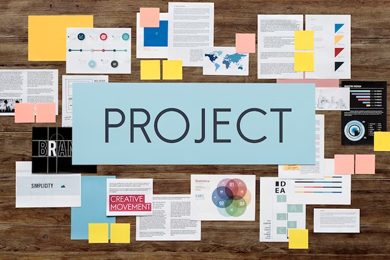



 Tech & IT
Tech & IT
 Business
Business
 Coding & Developer
Coding & Developer
 Finance & Accounting
Finance & Accounting
 Academics
Academics
 Office Applications
Office Applications
 Art & Design
Art & Design
 Marketing
Marketing
 Health & Wellness
Health & Wellness
 Sounds & Music
Sounds & Music
 Lifestyle
Lifestyle
 Photography
Photography
More Learnfly
Business Solution Become an InstructorAgile is a project management and product development approach emphasizing flexibility, collaboration, and customer feedback. It promotes iterative and incremental delivery, enabling teams to respond promptly to changing requirements and deliver value quickly.

By : Anton Kucher
IT project management course for project and product managers of Junior and Middle le...
4.3 275
2:59:14 hrs 11 lectures Beginner Level
.jpg)
By : AKHIL VYDYULA
Mastering Project Success: Strategic Communication, Process Development, and Agile Im...
4.3 317
1:2:2 hrs 8 lectures All Level

By : Vivek Prakash PMP, MCP
The Agile concepts you need to clear your PMP® Exam...
4.4 970
1:31:1 hrs 6 lectures Intermedite Level

By : Vipesh Singla
Unlock the Path to Agile Excellence...
4.8 1025
3:3:10 hrs 21 lectures All Level

By : GenZed Learning
Master Agile & Scrum Project Management: Boost Your Skills, Dive Deep into Agile Mind...
4.8 13634
44 lectures All Level

By : Noah Tucker
Master Atlassian's Confluence in as little as two hours in this Crash Course. Created...
4.5 1238
3:17:54 hrs 51 lectures All Level
.jpg)
By : Sudipta Malakar
Embrace Pragmatic Agile Project Management with Relative Estimation techniques for mo...
4 1053
16 lectures All Level

By : Sudipta Malakar
Reignite Agile Project Management for More Business Value Adds...
4.4 1058
15 lectures All Level

By : Sudipta Malakar
Integrate Agile into Your DAILY life for More Agility...
4 955
8 lectures All Level

By : Jade Ball
Exploring the use of Agile Project Management...
4.6 10096
6 lectures All Level












Learn more topics in various categories at one place. Explore unlimited courses in other categories and up-skill yourself today.

 Jazeb Akram
Jazeb Akram 4.2 771169 Beginner Level

 John Hedengren
John Hedengren 4.1 569077 All Level

 Ranjan Pandey
Ranjan Pandey 4.1 346746 All Level

 Muhammad Ahsan Pervaiz
Muhammad Ahsan Pervaiz 4.2 101353 All Level

 Pieter Vliegenthart
Pieter Vliegenthart 4.6 100931 All Level

 Jerome P.
Jerome P. 4.8 100902 All Level

 Senol Atac
Senol Atac 4.9 100125 All Level

 Vikas Munjal
Vikas Munjal 4.8 100079 Beginner Level

 Avinash A
Avinash A 4.8 100041 All Level

 Anton Kucher
Anton Kucher11 Lectures All Level
.jpg)
 AKHIL VYDYULA
AKHIL VYDYULA8 Lectures All Level

 Nhoeb Khan
Nhoeb Khan17 Lectures All Level
.jpg)
 Nhoeb Khan
Nhoeb Khan22 Lectures All Level
.jpg)
 Nhoeb Khan
Nhoeb Khan32 Lectures All Level
.jpg)
 Fredrick Ezeh
Fredrick Ezeh35 Lectures All Level

 Jean-Charles Savornin
Jean-Charles Savornin28 Lectures All Level

 NEIL KENDRICK
NEIL KENDRICK32 Lectures All Level

 Sandi Lee
Sandi Lee67 Lectures All Level

 Vivek Prakash PMP, MCP
Vivek Prakash PMP, MCP 6 Lectures All Level

 Sebastian Richard Danful Jnr.
Sebastian Richard Danful Jnr.121 Lectures All Level

 Vipesh Singla
Vipesh Singla 21 Lectures All Level

 GenZed Learning
GenZed Learning 44 Lectures All Level

 Noah Tucker
Noah Tucker51 Lectures All Level

 Mustafa Karampurwala
Mustafa Karampurwala11 Lectures All Level

 Jessica Ingram
Jessica Ingram13 Lectures All Level

 Mubasher Rehman
Mubasher Rehman8 Lectures All Level
.jpg)
 Sudipta Malakar
Sudipta Malakar13 Lectures All Level
.jpg)
 Sudipta Malakar
Sudipta Malakar16 Lectures All Level

 Sudipta Malakar
Sudipta Malakar15 Lectures All Level

 Sudipta Malakar
Sudipta Malakar8 Lectures All Level

 Umer Lone
Umer Lone23 Lectures All Level

 Mahmoud Talaat
Mahmoud Talaat 7 Lectures All Level

 Tarek Darwish
Tarek Darwish8 Lectures All Level

 Tarek Darwish
Tarek Darwish8 Lectures All Level

 Tarek Darwish
Tarek Darwish5 Lectures All Level

 Tarek Darwish
Tarek Darwish5 Lectures All Level

 Jade Ball
Jade Ball 6 Lectures All Level

 Svetlina Al-Anati (MSc Eng, CSM, CSPO, SAFe 5.0 SA, LeSS, CSSGB)
Svetlina Al-Anati (MSc Eng, CSM, CSPO, SAFe 5.0 SA, LeSS, CSSGB)6 Lectures All Level

 Omni Academy
Omni Academy 122 Lectures All Level

 Prime Project Control
Prime Project Control11 Lectures All Level

 Danny Liu
Danny Liu39 Lectures All Level

 Janam Sandhu
Janam Sandhu9 Lectures All Level

 Aytug Isik
Aytug Isik24 Lectures All Level

 Danny Liu
Danny Liu44 Lectures All Level

 Akhilendra Singh
Akhilendra Singh53 Lectures All Level

 Akhilendra Singh
Akhilendra Singh45 Lectures All Level

 Alex Kostritsa
Alex Kostritsa28 Lectures All Level
Agile is an iterative and flexible approach to project management and software development that prioritizes collaboration, adaptability, and customer satisfaction. It emphasizes delivering small, functional increments of a project in short cycles, allowing for frequent reassessment and adjustments.
The Agile Manifesto outlines key principles, including prioritizing individuals and interactions over processes and tools, working solutions over comprehensive documentation, customer collaboration over contract negotiation, and responding to change over following a plan.
Common Agile methodologies include Scrum, Kanban, and Extreme Programming (XP). Scrum, for instance, uses short development cycles called sprints, while Kanban focuses on visualizing and optimizing the flow of work.
Agile promotes cross-functional teams that include members with diverse skills. This ensures that the team has the necessary expertise to handle all aspects of a project, fostering collaboration, and reducing dependencies on external resources.
Agile employs iterative and incremental development, breaking down a project into small, manageable increments. This approach allows for rapid delivery of valuable features, constant feedback from stakeholders, and the flexibility to adapt to changing requirements throughout the project lifecycle.





